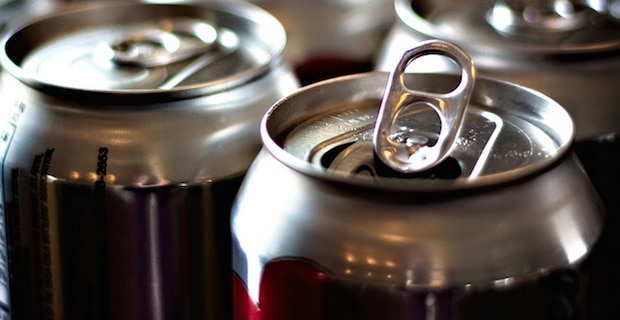
Acesulfame-potassium, aspartame, saccharin, sucralose and neotame, the five artificial sweeteners approved by the U.S. Food and Drug Administration, have slipped into our food supply largely unnoticed. They are found in over 6,000 products, including cereal, chewing gum, mouthwash, toothpaste, condiments, medications, nutritional supplements, and even seemingly healthy foods like whole grain or bran cereals.
Because artificial sweeteners are hundreds of times sweeter than sucrose (table sugar), minute amounts are needed to add sweetness without the calories.
| Artificial Sweetener | Brand Names | Sweetness as Compared to Sugar |
| Aspartame | Equal®, NutraSweet®, others | 180 times sweeter than sugar |
| Acesulfame-K | Sunett®, Sweet One® | 200 times sweeter than sugar |
| Saccharin | Sweet'N Low®, Necta Sweet®, others | 300 times sweeter than sugar |
| Sucralose | Splenda® | 600 times sweeter than sugar |
| Neotame | No brand names | 7,000-13,000 times sweeter than sugar |
1Source: www.hsph.harvard.edu/nutritionsource/healthy-drinks/artificial-sweeteners

Food manufacturers are required to list artificial sweeteners on ingredients lists, but, with the exception of saccharin, are not required to provide the amount used in products to either federal agencies or to the general public2. The must current statistics indicate that sucralose is found in 2,500 products, acesulfame-K is found in 1,103 products, and aspartame is found in 974 products3. According to The American Journal of Clinical Nutrition, close to 11 percent of Americans consume beverages sweetened with artificial sweeteners and almost 6 percent regularly consume foods and snacks containing artificial sweeteners.
The largest concern with artificial sweeteners is their safety. The FDA sets the daily limit for aspartame use at 50 mg per kg of body weight.
Proponents, which include the FDA, insist there isn’t enough evidence to show they pose any serious threat to health. However, there are thousands of anecdotal reports of side effects, and some animal studies indicate that long-term consumption of artificial sweeteners may increase the risk for cancer and/or neurological complications.
But considering the world-wide obesity epidemic, are artificial sweeteners worth the risk if they contribute to weight management? Recent studies suggest artificial sweeteners may actually play a role in weight gain rather than weight loss. They may also increase one’s risk for obesity, Type 2 diabetes and heart disease. Current research on artificial sweeteners suggests they don’t satisfy the brain’s craving for something sweet (a craving for glucose, or sugar), thereby leading the eater to consume other calorie-rich foods to compensate.
Another potential problem is that due to their highly sweet taste, they may ‘reset’ our perception of ‘sweet’ taste, so that foods that are naturally sweet (such as fruit) aren't as satisfying anymore. Research suggests that this may lead a person to seek out and eat more food in an attempt to please the pleasure centers of our brains.
Read more about artificial sweeteners and weight gain
Let’s take a closer look at the five approved artificial sweeteners:
Aspartame
Marketed as Equal and NutraSweet, aspartame is 180 times sweeter than sugar. It’s the main sweetener in most diet sodas, including Diet Coke and Diet Pepsi, and it may also be found in chewing gum, sugar-free desserts, yogurt, and even in some medications and vitamin supplements. But it’s most often seen as a tabletop sweetener in little packets intended to replace sugar in your coffee and tea.
The artificial sweetener is made from two amino acids, L-phenylalanine and L-aspartic acid, with a third component called a methyl ester group (which breaks down into methanol). One of the by-products your body creates by breaking down aspartame is formaldehyde, which is extremely toxic to health, even in very small doses. L-phenylalanine is often made with the use of a genetically modified microorganism, Escherichia coli.
Yup, you read that correctly – aspartame is “harvested” from the excrement of GM E. coli bacteria. Read more about that here: Aspartame: The Artificial Sweetener Made From…Poop?!
Aspartame is one of the most controversial ingredients in pre-packaged foods. Over the past 30 years, out of all of the consumer complaints received by the FDA, aspartame accounts for roughly 75% of them. There are at least 92 reported side effects, many of them neurological symptoms. Headaches are the most commonly reported symptom of aspartame use.
Here are just a few more:
|
|
|
Also, because aspartic acid can cross the blood brain barrier, aspartame may mimic symptoms of multiple sclerosis, Parkinson’s disease and epilepsy4. In rare cases, aspartame may trigger epileptic seizures—and there is increasing evidence that aspartame use may lead to weight gain!
Several studies have linked aspartame to cancer. A 2006 Italian study found that rats fed high daily doses of aspartame (the equivalent of nearly 3 liters for a 150-pound human) experienced higher levels of lymphomas, leukemia, and other types of cancer.
Still, after reviewing all of the studies on aspartame, the FDA concluded that the results weren’t strong enough to warrant removing it from the market. So once again, it’s up to consumers to avoid the artificial sweetener. The first step is to know where to find it.
Aspartame is clearly labeled on food and drink packaging, so it’s easy to recognize products that contain it. Products with aspartame must carry a label advising those with phenylketonuria (or PKU), a rare genetic disorder in which the body cannot properly break down phenylalanine, that the amino acid is present. It is listed in the ingredient list as “aspartame.”
Luckily, food manufacturers are listening to consumer complaints and have already begun replacing aspartame with other artificial or natural sweeteners in their beverages and products.
Sucralose
Commonly known as Splenda, sucralose is replacing aspartame in many products. Now found in over 2,500 products, it’s quickly becoming the most popular artificial sweetener. The zero calorie sweetener is 600 times sweeter than table sugar. Thirty-nine percent of the sucralose sold to the food industry goes into beverages, and 53 percent goes into food. You’ll find it in products like Crystal Light, Atkins Bars, chewing gum, juices, and many desserts. It’s available as a sugar substitute for home baking too.
Eight percent of the sucralose made is sold to pharmaceutical companies. It’s sometimes used in medications such as throat lozenges, vitamins or chewable tablets to mask a bitter flavor.
Though studies indicate that sucralose is safe, consumers report many side effects as a result of sucralose ingestion including:
|
|
|
|
A recent study found that insulin levels of the subjects who ingested sucralose increased by about 20 percent. Another study found that sucralose (Splenda™) consumption reduced the amount of healthy bacteria in the intestines of male rats by 80 percent and contributed to weight gain.
Read more about sucralose, blood sugar and insulin
Acesulfame Potassium
Marketed as Sunnett and Sweet One, Acesulfame Potassium, sometimes called Ace-K is 200 times sweeter than sugar. You’ll find it in breakfast cereals, snack foods, yogurt, salad dressings, soda, baked goods, chewing gum, toothpaste and mouthwash, even in nutritional supplements.
Acesulfame potassium is the least tested of all the artificial sweeteners. Research on Ace-K was conducted in the '80s. At that time, studies found a link between consumption of ace- and cancer in laboratory animals. Yet, the FDA approved it for consumption in 1988 and they have not required any more testing since. Clearly, more scientific study on the artificial sweetener is needed.
Acesulfame potassium is a potassium salt containing methylene chloride, predominantly used as a solvent in paint strippers and removers. The Environmental Protection Agency considers methylene chloride to be a probable human carcinogen5. Long-term exposure to methylene chloride can cause effects related to the central nervous system, including headaches and mood swings. Consumption of Ace-K may cause nausea, impairment of the liver and kidneys, problems with eyesight and possibly cancer.
Neotame
The newest artificial sweetener on the block, neotame was originally introduced by Monsanto before it sold NutraSweet.
Neotame is 7,000 to 13,000 times sweeter than sugar and is half the cost of sucralose. It is formulated for use in beverages, dairy products, frozen desserts, baked goods, gum and tabletop use (meaning, it will be available in portion-sized packets for coffee and tea). Because it’s a new sweetener, it isn’t yet widely used.
Neotame was approved in 2002 and while corporate-sponsored studies were conducted, none were long-term or double-blind. The only symptom that was cited in the studies was headaches. Dr. Joseph Mercola calls neotame “aspartame on steroids”. He and other health experts predict that once neotame is more extensively used, consumer health complaints will be rampant.
Chemically, neotame is similar to aspartame, but with less phenylalanine, intended to be safe for consumption for those with phenylketonuria (PKU), so products made with neotame do not require special labeling for phenylketonuria.
Read more about the top 8 natural sweeteners
Saccharin
The main sweetener in Sugar Twin and Sweet’N Low, saccharin is 300 times sweeter than sugar. It’s often mixed with other artificial sweeteners due to its metallic aftertaste. Studies have linked saccharin to bladder tumors in rats, and in 1977, the FDA required warning labels on all saccharin-containing foods, but changed its stance in 2000, allowing saccharin to once again be sold without warning labels.
Many health experts recommend that infants, children and pregnant women should avoid saccharin because of the possibility of allergic reactions. Saccharin belongs to a class of compounds known as sulfonamides, which can cause allergic reactions in some individuals, including:
|
|
|
To avoid artificial sweeteners, look for them in the ingredient list of any packaged beverage, food or product (including medication and toothpaste). Products containing artificial sweeteners are mainly marketed to those who are overweight and diabetic. If that includes you, read labels carefully!
References:
1 www.hsph.harvard.edu/nutritionsource/healthy-drinks/artificial-sweeteners
2 care.diabetesjournals.org/content/35/8/1798.full
3 care.diabetesjournals.org/content/35/8/1798.full
4 www.livestrong.com/article/459197-the-effects-of-aspartame-on-children
5 www.epa.gov/ttn/atw/hlthef/methylen.html
Image: Nomadic Lass










